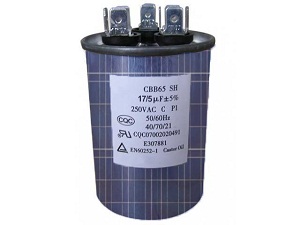Ohio researchers study iron flow battery potential for solar storage
 Researchers at Case Western Reserve University in Ohio are working to build a flow battery out of iron that will be able to cheaply store solar and wind energy for the grid.
Researchers at Case Western Reserve University in Ohio are working to build a flow battery out of iron that will be able to cheaply store solar and wind energy for the grid.
“It’s an old idea that it’s time to come back to,” said Jesse Wainright, a chemical engineering professor at Case School of Engineering, who is working on the project.
Wainright’s research partner, Case professor Robert Savinell, said he wanted to build an iron flow battery 30 years ago when renewable energy first started popping up as a possible solution to energy woes.
“The difference now is that wind and solar are for real,” Wainright said. “They certainly weren’t 30 years ago. Now, adding storage to the grid is something we really need to do.”
The Department of Energy's Office of Electricity Delivery and Energy Reliability, through Sandia National Laboratory, is funding the research with a $600,000 grant.
For large-scale energy storage, a flow battery has significant advantages over a standard battery. In standard batteries, power and energy densities are limited by wrapping all the materials used to convert chemical energy into electrical energy inside of a single cell, according to a release from the university. As a result, the battery loses efficiency over time.
In flow batteries, chemical reactants used to produce electrical energy are stored in two tanks, and the electrodes, which are not used as fuel, are housed in a separate chamber. The reactants are pumped one direction through the chamber to charge the battery and the other direction to discharge the system.
Researchers around the world are already building successful flow batteries, but usually using Vanadium, a rare metal mined in Russia and South Africa that sells for $8 to $25 per pound in its raw form, according to the release.
Iron, on the other hand, is plentiful in North America and sells for just 25 cents per pound after processing.
“In the end,” Wainright said, “iron makes sense. There’s no cheaper element. We have to try to make this work.”
He said the iron flow battery does not compare with new lithium-ion technology, which is the best way to go for portable batteries because it’s lightweight and high density.
But for large-scale energy storage batteries that will hold megawatts of power, they don’t make sense.
“Lithium-ion batteries are certainly efficient,” he said, “but they’re not cheap.”
And when you’re talking about grid-scale energy storage, Wainright said, you don’t need to worry about portability.
A large-scale energy storage facility that could accommodate a wind farm by storing up to 20 megawatt-hours of electricity would require two storage tanks for the iron solutions of about 250,000 gallons—or 8 railroad tank cars each, according to the release.
A system that size could supply the power needs of 650 homes for a day.
So how long before this new energy storage technology, which promises to make solar and wind more viable, is ready for the market?
“Honestly,” Wainright said, “we’re far. “We’re just starting the three-year program, and in the end we hope to have something in the kilowatt range. But if we can show the chemistry works, the scale-up should be easy.”
Pictured: OK, we know this isn't technically a battery but a conductor. However, it looks like a battery, and that's good enough for us.



